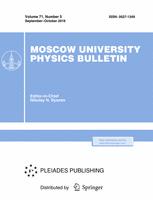This review is devoted to a discussion of the prospects for solving the problem of a low degree of integration of the traditional elements for promising (due to the high performance and extremely low energy dissipation) superconducting digital electronics. We define three main directions on the path to compact multi-element Josephson electronic systems: (1) reduction of the Josephson junction to submicron size, (2) decrease of the area of standard logic cells, and (3) fabrication of a compact and rapid Josephson memory. We present the physical foundations of Josephson elements in order to show the fundamental constraints on establishing standard submicron tunnel contacts and compact logic cells/memory elements. This survey clearly demonstrates the essence of breakthrough technological solutions to create ultrasmall heterostructures with desired settings, reduce and optimize logic cells, and create memory unit cells based on Josephson junctions with magnetic layers.
85.25.Hv Superconducting logic elements and memory devices; microelectronic circuits
85.75.Dd Magnetic memory using magnetic tunnel junctions
74.50.+r Tunneling phenomena; Josephson effects
$^1$Department of Physics, Moscow State University, Moscow, 119991, Russia
$^2$Skobeltsyn Institute of Nuclear Physics, Moscow State University, Moscow, 119991, Russia
$^3$Lukin Scientific Research Institute of Physical Problems, Zelenograd, Moscow, 124460, Russia



